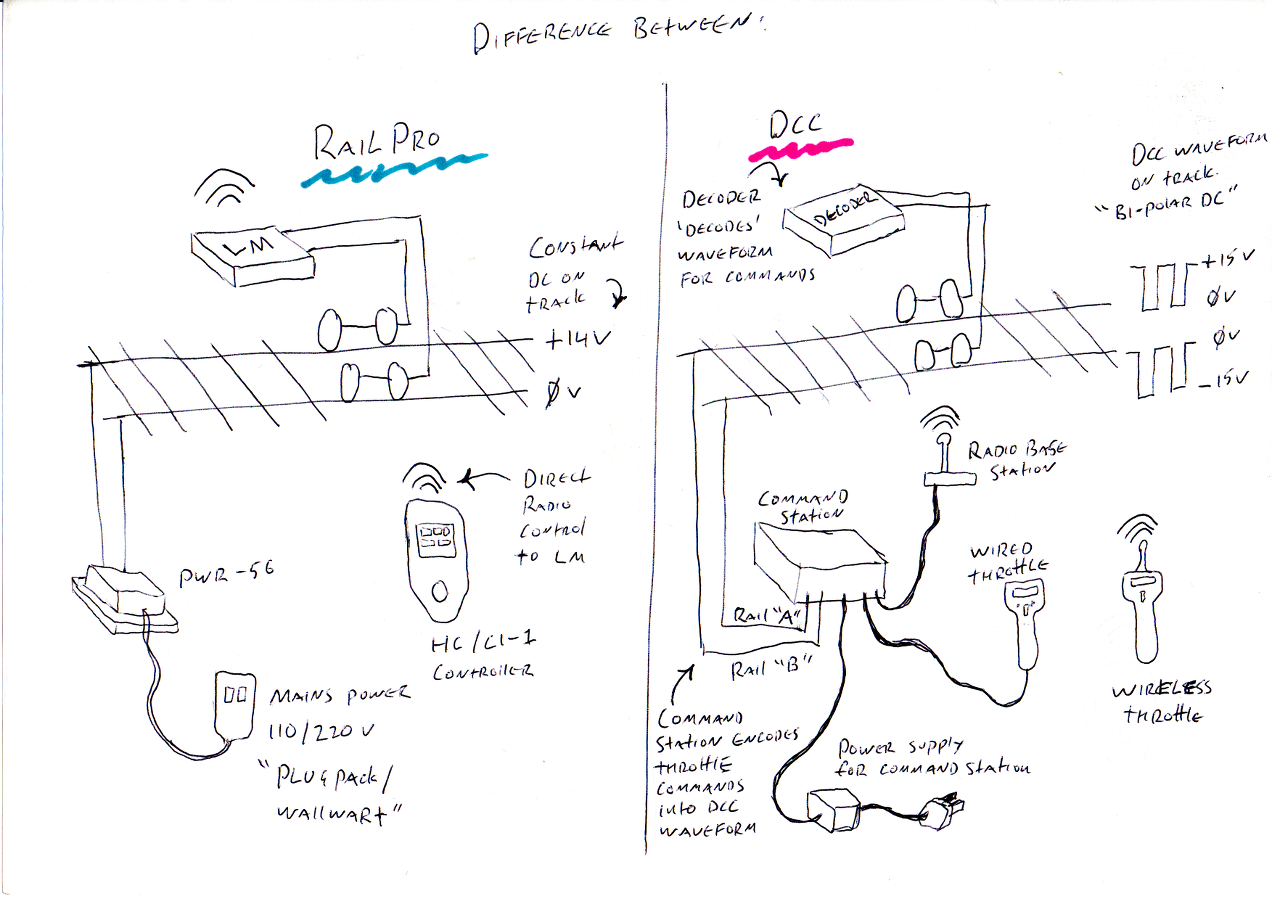Nope. No DCC control signal available.
Hmm, I think it might be prudent of us to explain this more thoroughly for those that aren't too familiar with DCC and how it differs from RailPro's straight DC.
Now, I'm no artist (that Gene went to another family member) and I know it so don't anyone laugh at my poor sketch.

In the sketch you can see the difference between RailPro and a typical DCC system. In particular to this thread note that RailPro has straight DC on the rails while DCC has what is called a bi-polar DC waveform on the rails. One rail swings between 0 to +15v and the other rail swings between 0 to -15v. While Rail "A" is at -15v Rail "B" is at 0v and when Rail "A" is at 0v Rail "B" is at +15v. This swinging back and forth and the time between swings is what encodes the commands that DCC decoders understand.
This is why you would not be able to drive a train from a power district powered by a RailPro power supply straight into a power district powered by a DCC system, you would get a short. To do so you would need as Alan mentioned a fancy transition section between them that is longer than all the locomotives (and cars/wagons with pickups) on a train that could switch between the two power methods.
If you have any DCC loco's and your not planning on changing them to RailPro it'd be easier to power the whole layout using the DCC system, RailPro LM's can use the DCC waveform for power but DCC decoders can not use straight DC.
Edit: This bit is apparently not correct, read Alan's reply below, then my reply to his reply explaining my justification for what I wrote.Just an aside for everyone, in regards to the DCC waveform, most of you would probably have heard of DCC being AC, well it's not, it's bi-polar DC as shown in the sketch but most if not all scope traces you'll see of a DCC waveform are misleading and perpetuate that DCC is AC. This is because when people run a DCC waveform through an oscilloscope they hook it up to both rail outputs. In this configuration what the scope sees and displays on it's screen is a singular AC waveform. Not knowing anything about oscilloscopes (and I still know very little) this had me stumped for a long time. Hopefully you've learned something too.
- Tim